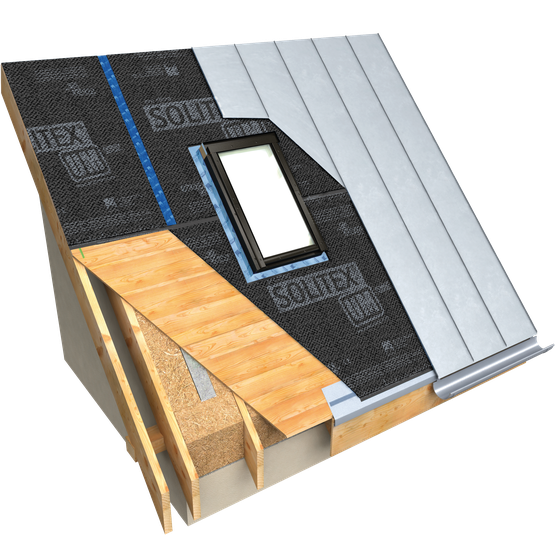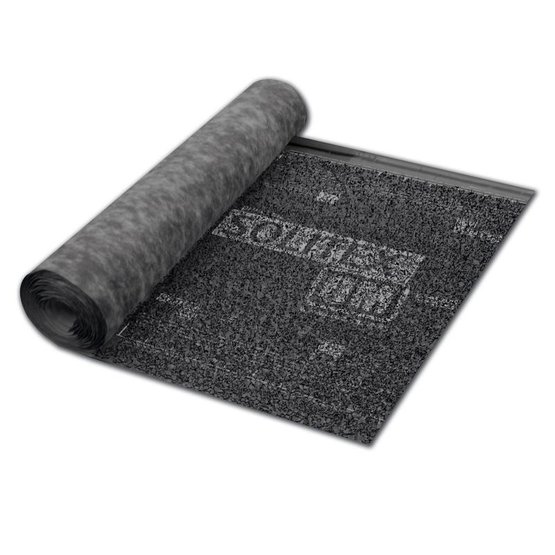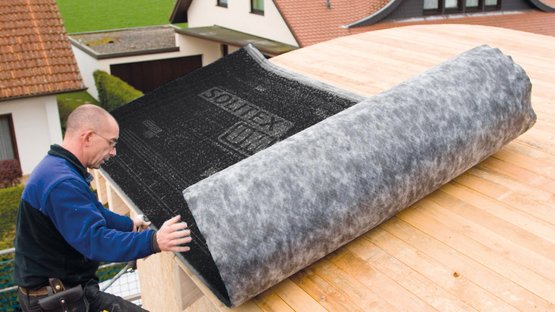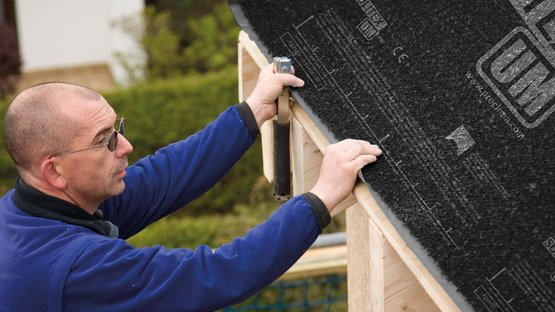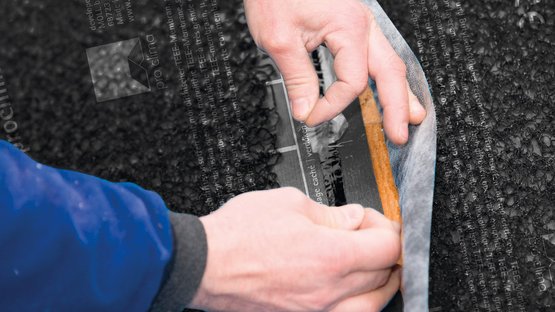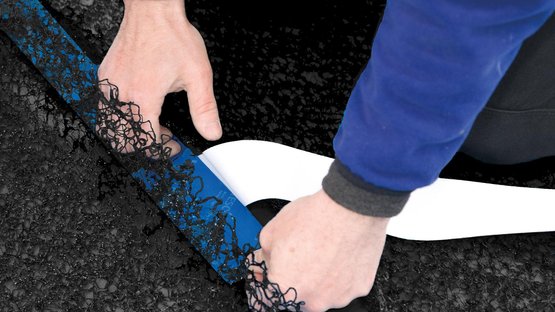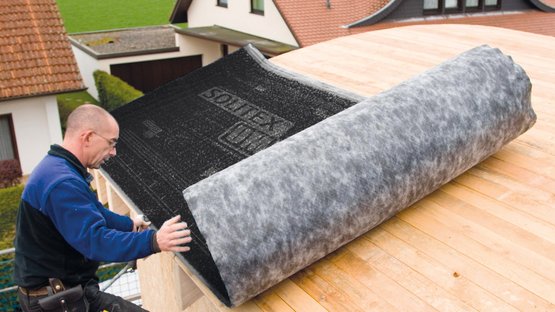Roofing underlay membrane with 3D separation mesh and self-adhesive strips
Advantages
- Highest possible durability and thermostability thanks to the TEEE membrane
- Reliable drying out: highly permeable (sd value = 0.05 m ; g value = 0.25 MN·s/g ; 65 US perms)
- Protects against corrosion and ensures improved noise insulation thanks to the 3D separation mesh
- Dry building structures thanks to pore-free TEEE membrane that is resistant to driving rain
- Up to 3 months of outdoor exposure
- Quick and reliable adhesion thanks to the integrated ‘connect’ self-adhesive strips on the long edges of the membrane
Areas of application
For use as a roofing underlay or facade membrane for ventilated and non-ventilated structures in combination with all roof and facade materials such as titanium zinc, aluminium, stainless steel, galvanised steel, copper etc. Fibrous membranes offer greater protection for structures and are recommended by leading providers of metal roofs for this reason. The 8 mm (⁵⁄₁₆”) thick 3D separation mesh made of fibrous PP protects the covering against waterlogging and dampens noise caused by rain or hail.
Installation instructions
General conditions
Install the SOLITEX UM membrane with the fibrous layer side facing outwards. The membrane is to be installed horizontally (parallel to the eave) in a taut manner as an underlay membrane over level roof sheathing made of solid wood or wood-based panels.
Fasteners may not be applied in areas where water runs off in a collected manner (e.g. in roof valleys).
Ridge ventilation should be provided in the case of non-insulated attics that have not been converted. In addition, permanent ventilation fittings should be provided in the unconverted attic.
Additional measures (e.g. covering with tarpaulins) should be taken during the construction phase in the case of buildings that are lived in or buildings that are to be given particular protection. Covering with tarpaulins should also be considered if construction work is to be interrupted for a longer period. The specifications of the applicable national regulations are to be taken into account when carrying out installation and adhesion.
pro clima on the outside ... and it's a wrap!
Weathertightness with pro clima
Find out more about pro clima's system solutions and products for sealing your building envelope on the outside - with roofing underlay membranes, breather membranes for facades, protective membranes for timber structures during the construction phase, and a full range of sealing tapes, sealants and accessories.


